Cant you sue the F&B company for fraud if they said they paid you money but never did?
News 1/4/17
Top News
An excellent Black Book survey of 12,000 consumers finds that:
- 57 percent are skeptical of patient portals, mobile apps, and EHRs because they don’t think providers can protect their information from hackers.
- Nearly all respondents express concern that information about their prescriptions, mental health, and chronic conditions is being shared with retailers, employers, and the government.
- A startling 89 percent of respondents withheld information from their providers during their 2016 encounters.
- The percentage of people who distrust health IT has jumped from 10 percent in 2014 to 70 percent today.
- 92 percent of patients who are discharged from hospitals under 200 beds don’t understand how to use the patient portals, engagement tools, and monitoring systems that hospitals provide, with 94 percent of nurses in those hospitals saying they don’t have time to add technology literacy to their discharge planning.
- 94 percent of doctors aren’t interested in reviewing data from patient wearables or fitness and nutrition apps.
- 82 percent of doctors report that some patients bring so much information from their web searches that they don’t have time to review it during the short time allotted for office visits.
- Nearly all respondents who use health improvement apps and devices say their PCP ignores their technology, with 24 percent of those respondents saying they may choose a more tech-savvy doctor as a result.
- 94 percent of providers think the government should pay for patient technology literacy training.
I’m not sure it’s quite the “digital divide” that Black Book calls it, though, since both consumers and providers struggle with technology, aren’t well trained to use it, and worry about breaches (both internal and external). “Divide” suggests some consumers benefit more than others and I’m not sure that’s the case. There’s not a lot of difference between not having the means to use apps vs. not having the interest or confidence to use them.
The most interesting thing about these results is that surveyed consumers nearly always, (a) claim they are in favor of something that sounds innovative, but (b) say their technology fears override everything else (even as they are spewing masses of personal data via Facebook and are willing to provide whatever information companies require to access free games or prizes). In this case, they have nothing positive at all to say about consumer health IT. You would expect similarly low usage of those products, which taxpayers have richly funded.
Reader Comments
From Cornichon: “Re: NextGen. Filed an SEC 8-K form giving shares to leadership, many of them vesting only based on the passage of time and not performance. The vesting is accelerated if the company is sold, which has been a topic of speculation for months. The executives also got new change of control benefits for those let go in conjunction with any sale.” CEO Rusty Frantz gets shares worth $850,000 for sticking around for four years plus another potential $472,000 for company performance, plus accelerated vesting if the company sells out. He also gets 150 percent of base salary and bonus, 18 months of health insurance, a pro-rated current year bonus, and outplacement services if he leaves after a sale. The other execs get a similar deal with 100 percent of base salary and bonus. QSII shares have taken a long slide down since mid-2011, now trading at 2005 prices and valuing the company at $840 million. Founder Shelly Razin, who lost his board chair seat in late 2015, holds more than 10 million shares, worth a cool $138 million although that’s a horrifying $358 million less than the same number of shares were worth a handful of years ago.

From Retired HIT guy: “Re: Summa Health (OH). It replaced its five-hospital ED staffing on January 1 with a company owned by the husband of Summa’s chief medical officer, with just 36 hours’ notice. Staff wondered how staffing would work given the weeks-long credentialing process and the lack of familiarity with the computer systems used.” The new company apparently realized the challenges facing it since it offered the existing ED docs a $100,000 incentive bonus and an extra $75 per hour join their company, with no takers. The hospital denies employee reports of long ED wait times and patients leaving without being treated.
From Marketing Slick: “Re: CommonWell. Cerner claims it was a founder of Carequality even though it fought it as a CommonWell competitor. All Cerner did was buy Carequality participant Siemens Health Services.”
From Connective Tissue: “Re: Carequality and CommonWell connecting their systems. I agree it’s the golden spike. Some backstory: Epic and McKesson were in a lawsuit over MyChart, as MCK wanted Epic to use RelayHealth. There was also an Epic concern that CommonWell might create a patient portal that would compete with those of providers. Cerner realized that with the VA deal on the table, they needed to get on board because the government supports Carequality. The question was over who charges who – for example, disability and life insurance companies pay the customer because it saves them paperwork. CommonWell wants to charge fees, but Epic wanted Carequality to be free for patient record exchange involving for care coordination. The agreement was for CommonWell to create a record locator service that they can charge for, while Epic agreed to support it for their interested customers (Surescripts offers the only national locator service – the rest are regional ones offered by HIEs). This agreement is like that of cell carriers in that Carequality and CommonWell can charge only their own customers, not those of the other service, and thus Cerner and Epic can’t charge each other. Since multiple participants are involved, rather than calling it a golden spike between two participants, perhaps the agreement could be better described as the linchpin in the nationwide ATM for healthcare.” A few folks who were involved have told me about the April 1, 2016 meeting that was brokered by Micky Tripathi, CEO of the Massachusetts EHealth Collaborative. There’s also that unverified rumor that Cerner is interested in acquiring RelayHealth, but I don’t have a solid source on that even as MCK sheds its other health IT assets and announces no plans for the best one (Relay).
From Unbalanced Sheet: “Re: R&D accounting. I would be surprised if Epic doesn’t use GAAP accounting like most large companies, but it’s never an apples-to-apples comparison. The question is how much R&D is capitalized and thus ends up on the balance sheet vs. expenses that are flushed through P&L. Aggressive companies like Cerner have capitalized 35 percent or more over the years, which allowed it to report higher earnings than more conservative companies. Management has a great deal of discretion over things like that that go toward quality of earnings.” I read somewhere that software companies must now treat R&D as an expense as it is incurred unless they can prove that the investment has a quantifiable future benefit. For software development, I was thinking that the only opportunity to capitalize R&D is the time between technical feasibility and GA, meaning you have to expense a product’s cost once it is released. However, the definition of “product” and “GA” may be squishy.
HIStalk Announcements and Requests
Your chance to weigh in:
- HIStalk reader survey 2017
- HISsies nominations (to those who asked to see Donald Trump, Barack Obama, or Microsoft CEO Satya Nadella on stage at HIStalkapalooza – sorry, but I don’t expect that to work out).

I applied matching money to Vicki’s donation to my DonorsChoose project to fully fund these teacher grant requests:
- A math fluency activities bundle for Mrs. M’s elementary school class in Fairfield, OH
- A document camera and interactive whiteboard system for Mrs. W’s middle school class in Middletown, OH
- Composition books and math games for Mrs. D’s elementary school class in N. Little Rock, AR.


Mrs. M reports that her Virginia students are surrounded by technology that they don’t always get to use because of economic circumstances, adding that the kids have jumped in to create a plan of how they will use the two tablets we provided in funding her DonorsChoose grant request.
HIStalkapalooza
HIStalkapalooza sign-ups are open. The usual rules apply:
- Everybody who wants to come has to sign up on this form (even me) – nobody gets invited automatically.
- Each person who wants to come has to sign up separately even if they’re a guest of someone else (because we use an automated check-in system with individually barcoded tickets),
- Signing up doesn’t guarantee that you’ll get an invitation since that depends on how many people I can invite, which is based on how many sponsors I get. Invitations will be emailed in three weeks or so.
- We pay per click of the House of Blues turnstile and thus close the doors early in the evening since someone swinging by for a late-evening beer still costs many dozens of dollars. If you can’t attend the whole event, please don’t take up a slot.
Thanks to our HIStalkapalooza sponsors who are graciously making the industry’s most talked-about event possible. I’ll have a write-up on each company leading up to the event, which is less than seven weeks away.

I need another couple of sponsors to hit the break-even point on HIStalkapalooza. Companies that want invitations to give out, recognition, and even to have their CEO welcome guests on the red carpet should contact Lorre. She will get creative in finding something fun — for example, HOB offered the idea of outfitting every server with a tie with a sponsor’s logo. I joked that it should be like Nascar where they wear fire suits plastered with logos, to which our HOB contact responded with a dry, two-syllable ha-ha before moving on to something important like the food options.
Webinars
January 18 (Wednesday) 1:00 ET. “Modernizing Quality Improvement Through Clinical Process Measurement.” Sponsored by LogicStream Health. Presenters: Peter Chang, MD, CMIO, Tampa General Hospital; Brita Hansen, MD, CHIO, Hennepin County Medical Center. The presenters will describe how they implemented successful quality governance programs, engaged with their health system stakeholders, and delivered actionable information to clinical leadership and front-line clinicians. Q&A will follow.
January 26 (Thursday) 1:00 ET. “Jump Start Your Care Coordination Program: 6 Strategies for Delivering Efficient, Effective Care.” Sponsored by Healthwise. Presenters: Jim Rogers, RN, RPSGT, director of healthcare solutions, Persistent Systems; Charlotte Brien, MBA, solutions consultant, Healthwise. This webinar will explain how to implement a patient-centered care coordination program that will increase quality as well as margins. It will provide real-world examples of how organizations used care coordination to decrease readmission rates, ED visits, and costs.
Acquisitions, Funding, Business, and Stock
Xerox completes its spinoff of its 93,000-employee business process services company Conduent, whose shares trade on the NYSE as CNDT.
Kaufman Hall acquires contract modeling, budgeting, and decision support software vendor KREG Information Systems.
Israel-based “smart shirt” company HealthWatch Technologies raises $20 million from a China-based drug company for its 15-lead, hospital-quality sensor garment.
People

Vocera hires Ben Kanter, MD (Extension Healthcare) as CMIO.
Announcements and Implementations
EHNAC releases 2017 standards for its 18 accreditation programs for electronic healthcare data exchange.
University of Vermont Medical Center files a $112 million state certificate of need to extend its Epic implementation.
United Healthcare will expand its wearables program to allow employees of some companies for which it provides health insurance to allow their employees to use their own wearables, connected via Qualcomm Life’s 2net connectivity platform. Employees can earn up to $4 day in credits for meeting walking goals involving frequency, intensity, and tenacity.
Government and Politics
Senate Republicans introduce an aggressive timeline for dismantling the Affordable Care Act on their promised first day of the new Congressional session. They are using a budget reconciliation resolution that can be passed with a simple majority vote in the Senate (the GOP has 52 seats) vs. the the usual 60-vote legislation approval level. The resolution was introduced by Senator Mike Enzi (R-WY), who says the ACA caused “skyrocketing premiums and soaring deductibles” while driving insurers out of the market.
Privacy and Security
A New York Times op-ed piece on healthcare cybersecurity co-authored by Eric Topol, MD calls for health systems to stop storing and owning patient health data, instead making patients responsible for storing their own information in the cloud or a digital wallet – possibly using blockchain technology – and deciding for themselves who to share it with. He adds,
We cannot leave it to the health record software companies — the Cerners, Epics and Allscripts of the world — to bring about the needed changes. Their business is to sell proprietary information software to health systems to create large centralized databases for such things as insurance reimbursements and patient care. Their success has relied on an old, paternalistic model in medicine in which the data is generated and owned by doctors and hospitals … Patients have shown an overwhelming willingness to share their information for altruistic reasons (which far exceeds the track record of doctors and health systems when it comes to sharing data).
US Special Operations Command in Florida is investigating a claim by security researcher Chris Vickery that he was able to breach the database of a company that provides healthcare workers for one of the group’s programs. Vickery has found several hundred unsecured MongoDB installations, at least some of which have been breached by a hacker with their data held for ransom. A security expert recommends blocking access to port 27017 or limit server access using binding local IPs, then restart the database with the –auth option after assigning user access. The no-SQL MongoDB is used to run big data analytics.
Other

Eric Topol, MD pans the apparently successful “Pure Genius” TV series in which a young technology billionaire creates a hospital that uses cutting edge technology to treat patients that other hospitals can’t help. He not only notes medical mistakes (calling a stroke a heart attack), but questions the show’s premise:
Patients are cured, their lives are saved, or they have dramatic responses to unproven, otherwise unavailable treatments. And in each case Bell, without any medical training or background, makes the critical clinical decisions: “Best idea wins,” he says at the series’ beginning, and they’re usually his. He meets directly with patients and their families, makes extraordinary promises, dresses in scrubs, and uses technology that has never been applied to human beings. When the amnestic police officer does not respond to what the show calls neurostimulation, Bell blurts out, “I’ve always wanted to reprogram someone’s brain” and administers some form of optogenetic intervention that partially restores his memory. The notion that a medically untrained tech billionaire walking around in casual clothes and flip-flops can make life-and-death decisions for people using far-fetched, unchartered therapies is preposterous.
A life insurance company in Japan replaces 34 of its claims adjusters with IBM Watson Explorer, which will analyze hospital records to determine insurance payouts. The company expects the investment to pay for itself in less than two years in replacing employee salaries with much-lower maintenance fees. The article succumbs to the sensationalistic “rise of the robots,” but it is inevitable that companies will replace expensive human labor with technology (both manufacturing and information), which is great for shareholders, at least until the customer base evaporates due to unemployment.
A Texas couple sues Apple after a driver distracted by using FaceTime on the highway caused an accident that killed their 5-year-old daughter. The couple says Apple should have warned users not to FaceTime while driving and should electronically prevent them from doing so (it would be interesting to see how Apple could distinguish a driver from a passenger).

Weird News Andy titles this story “Pean pain paean” (hint: “pean” is a type of surgical forceps). Surgeons in Vietnam remove surgical forceps left in a man’s stomach for 18 years, ironically in the same hospital that apparently left them there in the first place. The hospital only keeps medical records for 15 years, but says it will try to locate the surgical team even if they have retired to let them know they messed up.
Sponsor Updates
- CTG employees support the Family Justice Center with donations of food, toiletries, and gift cards.
- AdvancedMD compiles its most popular e-guides and videos from 2016.
- Aprima employees donate over nine tons of food to Dallas-area families in need through Metrocrest Services.
- Besler Consulting releases a new podcast, “A brief history of healthcare reform in America.”
- CoverMyMeds will sponsor and present at CodeMash January 10-13 in Sandusky, OH.
Blog Posts
- Elderly Health and Prescription Data Islands (Arcadia Healthcare Solutions)
- Is the US Healthcare System Meeting Patient Needs? (CareSync)
- Dynamic Community Services – A Year of Giving (Dynamic Computing Services)
- Top 5 Blog Posts of 2016 (Dimensional Insight)
- Three Memorable Moments in 2016: Bundled Payments, MACRA, and of course, Donald Trump (ECG Management Consultants)
- Top 4 Takeaways from the Low Country (Evariant)
- A Look Back at FormFast’s Top 8 Blog Posts from 2016 (FormFast)
- Assessing the Past and Predicting the Future for 2017 (Galen Healthcare Solutions)
- Digital Insulin Management Cuts Hospital Readmissions for CV Patients (Glytec)
- 2017 Predictions From Healthcare Leaders Across the Country (Hayes Management Consulting)
- Top 10 Most Popular EHR Blog Posts of 2016 (HCI Group)
- The Revolution in Healthcare Consumerism (Healthgrades)
Contacts
Mr. H, Lorre, Jennifer, Dr. Jayne, Lt. Dan.
More news: HIStalk Practice, HIStalk Connect.
Get HIStalk updates. Send news or rumors.
Contact us.































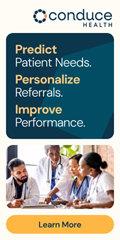




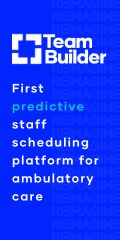







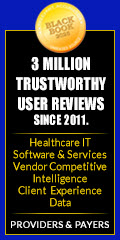




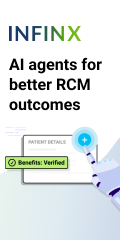


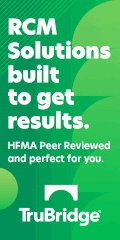


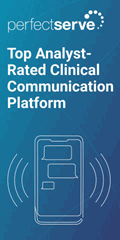


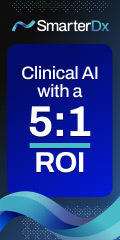
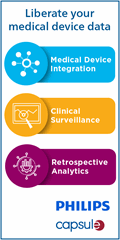

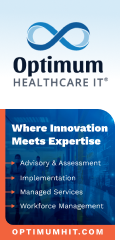


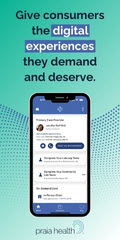



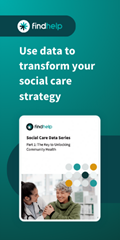

















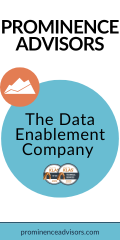


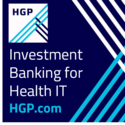

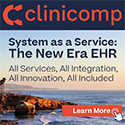
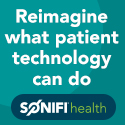







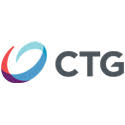


RE: Unbalanced Sheet…. To paraphrase Jerry McGuire: “‘Show me the financial statements.’ Until Epic publicizes their financial statements all statements about how much they spend on this and that from Epic are worth about as much as all that money Judy’s given to the Giving Pledge, which is to say, nothing.”